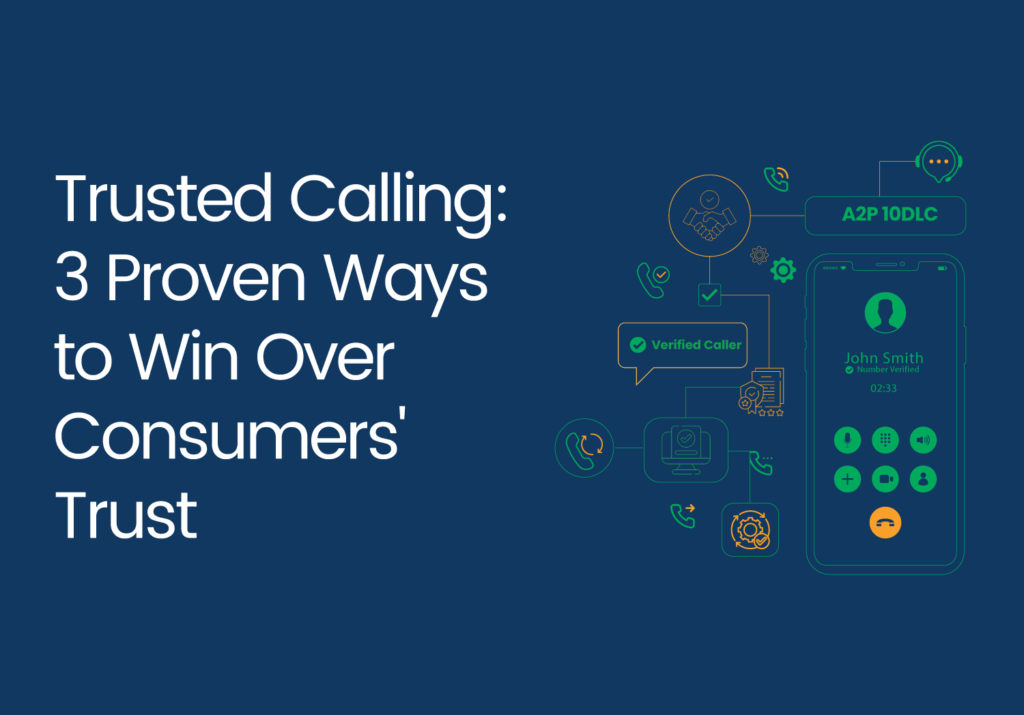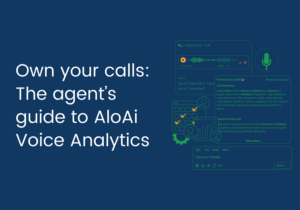If you’re a business that relies on phone calls to reach your customers, you know how challenging it can be to get them to answer your calls.
With the rise of robocalls, spam calls, phishing scams, and caller ID spoofing, consumers have become wary of picking up calls from unknown numbers.
This is reflected in a survey by TNS which revealed that three-quarters of Americans never answer calls to their wireless phone if they do not recognize the number. 78% of respondents said they are more willing to answer the phone if the caller ID displays the logo and name of a brand they recognize.
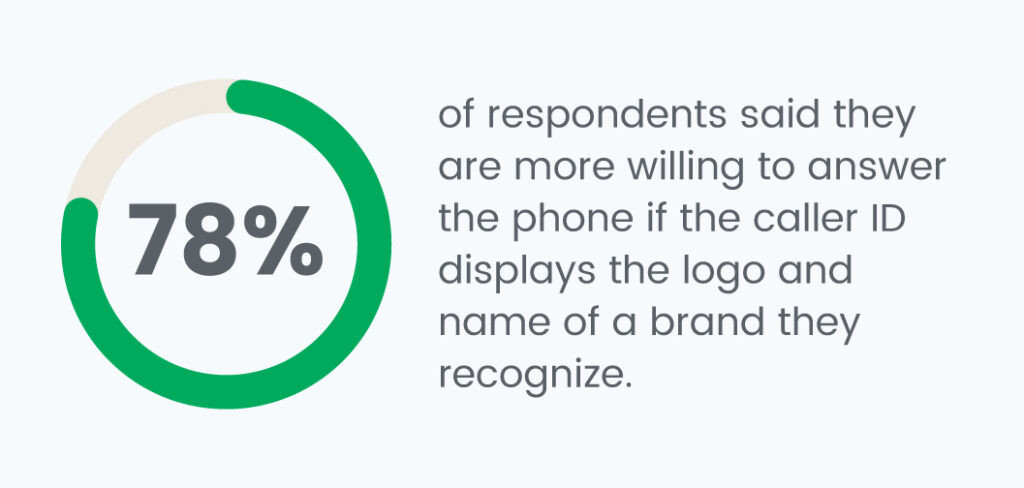
Carriers have taken action to address the issue of fraudulent calls by blocking calls from unknown sources and identifying potential spam or scams. However, this security measure unintentionally affects legitimate business calls, causing them to be labeled as spam or scam and decreasing call answer rates.
In this blog, we will explore the critical problems businesses have with reaching consumers and provide three proven measures that can be employed to restore consumer confidence in voice communications.
Let’s get into the world of trusted calling and discover how you can win over consumer trust, ensuring calls are recognized as genuine, branded, and worthy of being answered.
But first,
Table of Contents
What is Trusted Calling?
Trusted Calling uses different technologies and practices that authenticate and verify callers’ identity and intent. It also displays relevant information and branding on the recipient’s phone screen.
Implementing it allows consumers to immediately identify who is calling and phone carriers to verify that calls are, in fact, from the number displayed on the caller ID.
To put Trusted Calling in perspective, let’s look at this example.
When you call a consumer for the first time, the chances are that they don’t recognize your number and are likely not to answer.
However, with Trusted Calling, your business caller ID shows the name “John Smith” and the number “(555) 555-1234”. Customers might still be unsure if they should answer the call because they’ve been getting a lot of spam calls lately, and so on top of that you can see a verified checkmark next to your caller ID. The caller ID also shows your company’s business name, “ABC Corporation.” This is because Trusted Calling registers your business name and number to carriers.
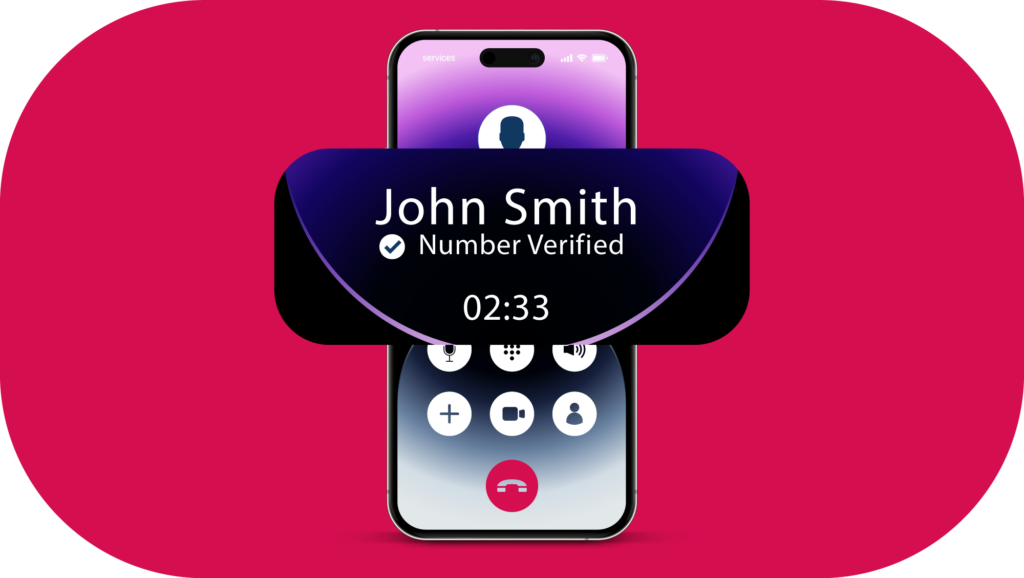
As a result of essential details such as the caller’s name, business name, and verified number provided, the consumer’s trust is increased, making them more likely to answer your call.
That’s Trusted Calling in a nutshell. It increases your business’s reputation among consumers and reduces uncertainty with calls while boosting call performance and ROI.
Let’s get into the present-day challenges of business voice communication with consumers and how you can solve them with technology.
- Carriers blocking calls
- Calls showing up as Spam/Scam Likely
- Consumers not picking up unknown calls
Problem 1: Carriers Blocking Calls
Consumers are becoming increasingly frustrated and concerned about their privacy and security due to the rise of robocalls, spam/scam calls, and phishing attempts.
In 2022, 41.5 billion scam calls were blocked, which is a 75% increase from the previous year. T-Mobile reported that an impressive 1,317 calls were identified or blocked every second.
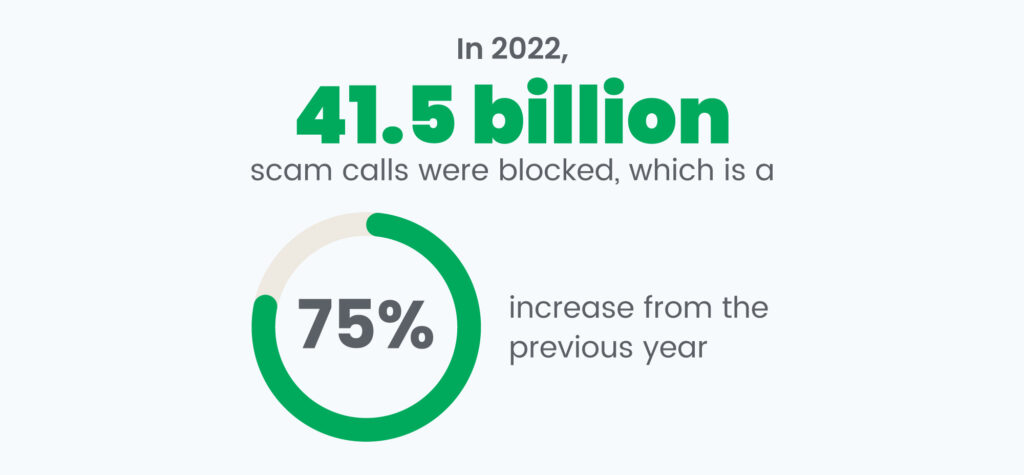
Unfortunately, scammers and spammers are constantly evolving their attack methods, and in 2022, Americans lost an estimated $39.5 billion to phone scams industry-wide.
Like Bouncers at an exclusive club, Carriers are the gatekeepers, who verify identity, prevent unwanted guests, maintain security, and enforce rules and regulations to create pleasant and safe customer experiences.
And if your number does not meet the Federal Communications Commission (FCC) requirements, you are blocked.
Solution: STIR/SHAKEN with A attestation
Trusted Calling with STIR/SHAKEN (also referred to as SHAKEN/STIR) is a protocol mandated by the FCC to combat the rise in unwanted robocalls and unlawful caller ID spoofing.
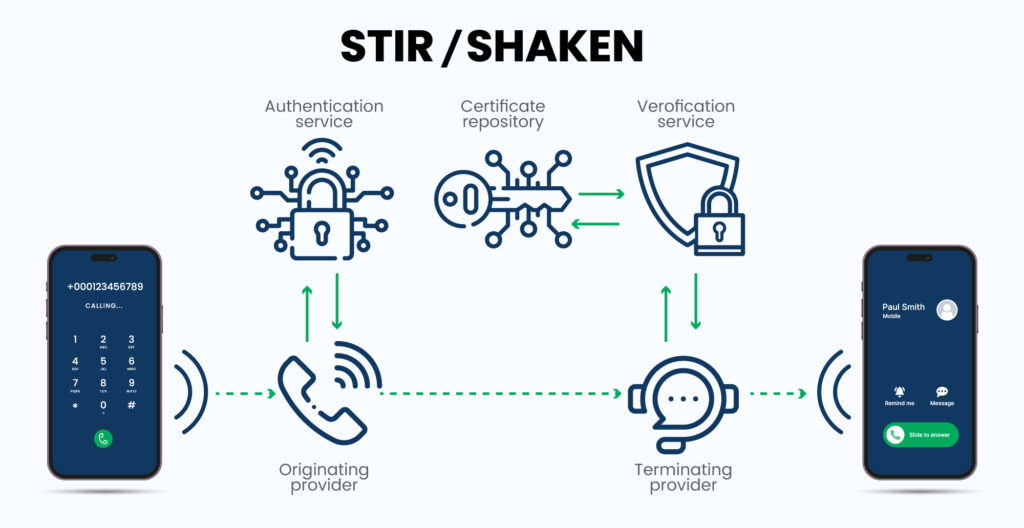
When adopted, Carriers can present a trust indicator, like “Caller Verified,” to recipients’ phones, helping you stop telephone hijacking with near-instant traceback, improve the reputation of your calls, and increase call answer rates for trusted callers.
The STIR/SHAKEN technology utilizes encrypted digital signatures to transmit your business number information, including identity and the validity of the phone number used as the caller ID, to all providers involved in the call’s route from your contact center to the recipient.
It also assigns different attestation levels to calls based on the confidence level in the caller’s identity.
STIR/SHAKEN 101: Attestation levels are a way to indicate the level of confidence that a phone service provider has in a caller’s identity and authorization to use the caller ID number.
There are three attestation levels
| Attestation Level | Description |
| A – Full attestation | The carrier knows the caller and has verified their right to use the number. |
| B – Partial Attestation | The carrier recognizes the caller, but they have not confirmed their authorization to utilize the number. |
| C – No Attestation | This doesn’t fulfill the criteria for either A or B, which includes making international calls. |
To avoid blocking your calls by Carriers, you need attestation Level A.
Attestation Level A signifies that the phone service provider, that initiated the call, is aware of the customer who made the call and has authorized the use of the caller ID number from which the call was made.
This level of attestation is the highest and demonstrates a greater degree of confidence in the caller’s identity and authorization. Calls with Attestation Level A are less likely to be obstructed or marked as spam by the recipient’s phone service provider.
When your call has Attestation Level A, the recipient’s phone will display your caller name and number, along with a green checkmark. This indicates that your call is legitimate and increases your pick-up rate.
How To Register for STIR/SHAKEN
There are several steps involved in ensuring STIR/SHAKEN compliance.
1. Register with the FCC
You must register with the FCC and obtain a 499 ID, a unique telecommunications provider identifier. You must also register in the Robocall Mitigation Database (RMD) and certify that you have fully implemented STIR/SHAKEN or have instituted a robocall mitigation program.
2. Register with the STI Policy Administrator (STI-PA)
To issue and manage digital certificates for STIR/SHAKEN, you must register with STI-PA. This entity oversees related policies and procedures. During registration, you’ll need to provide details like your business name, address, contact information, and phone number inventory. Additionally, you’ll be required to pay registration and annual fees based on your call volume.
3. Obtain a signing authority from an STI Certificate Authority (STI-CA)
To obtain a signing authority for STIR/SHAKEN digital certificates, you must apply to an STI-CA entity that issues and validates them. To apply, you must provide your 499 ID, OCN (Operating Company Number), and public key.
4. Ready your equipment and network
To use STIR/SHAKEN protocols, you must ensure that your device, such as a SIP phone or softphone, is compatible. Additionally, it’s essential to have a dependable internet connection and a secure network. To complete the process, collaborate with your phone service provider or partner to confirm their compliance with STIR/SHAKEN and the ability to sign and verify calls with the correct attestation level.
These steps can seem daunting, however Aloware lets you rest easy by handling every step.
Aloware has implemented the STIR/SHAKEN protocol since June 2021, and it’s as easy as filling out a form inside your Aloware account. If you have multiple numbers and a high calling volume, you can register all numbers using our Local Presence feature and dismiss the worries of being blocklisted by carriers.
For more details on how to ensure STIR/SHAKEN, check out our guide.
Problem 2: Calls showing up as Spam/Scam Likely
Spam/Scam Likely is when service providers (AT&T, Verizon, Vodafone) flag your phone number as fraudulent due to specific parameters your voice communication provider didn’t fulfill.
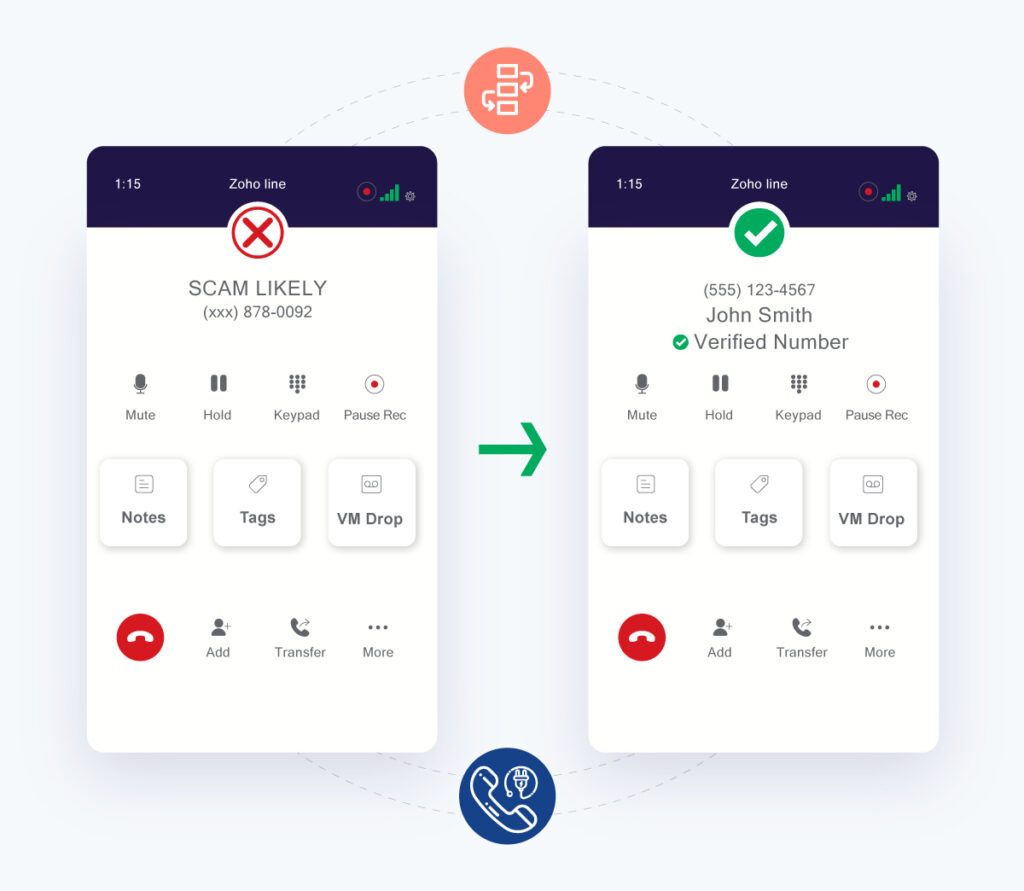
When an incoming call is detected as spam or scam, the caller ID display on the recipient’s phone will show a warning message indicating that the call is likely unwanted or malicious.
This is possible through the collaboration of various parties involved in the telecommunications ecosystem, including carriers, service providers, and third-party spam detection services like Trapcall, Robokiller, or Truecaller.
The goal is to protect consumers from fraudulent and annoying calls, including robocalls, phishing attempts, and other forms of unsolicited communication.
How “Spam/Scam Likely” Works
Call Analysis: The network or the recipient’s phone analyzes the incoming call data, including the caller’s phone number, location, and other metadata when initiating a call.
Spam/Scam Database: The analyzed data is compared against a constantly updated database of known spam and scam numbers. This database is compiled from reports, consumer feedback, and spam detection algorithms.
Detection and Labeling: If the incoming call matches the criteria of a known spam or scam number, it will be labeled as “Spam/Scam Likely” on the recipient’s caller ID display.
Solution: Voice Integrity
Aloware provides an integrated feature powered by Twilio known as Voice Integrity, specifically designed to improve your call response rates and prevent the blocking of calls due to a poor reputation. This is accomplished by eliminating spam labels associated with your phone numbers.
Voice Integrity verifies your business identity and phone numbers and registers them with carriers and other entities that flag calls as spam or scam.
The thing is, Carriers have analytics databases for spammers, and consumers have apps that block spam calls. With Voice integrity integration in Aloware, your phone numbers are automatically registered with these vendors.
By removing mislabeled SPAM, you improve answer rates and easily monitor phone number reputation.
Problem 3: Consumer Not Picking Up Unknown Calls
Picture yourself as a busy professional with a packed schedule. One day, while in the middle of an important meeting, your phone starts ringing. Glancing at the caller ID, you see an unknown number with no recognizable information. Your first instinct is to ignore the call, assuming it might be another robocall or spam.
Later in the day, you listen to your voicemail and discover a message from the bank concerning your account.
You realize you missed a crucial call because it was labeled as “Unknown Caller,” and you feel frustrated that you didn’t respond earlier.
This is common when consumers receive calls from numbers they do not recognize or are not associated with a recognizable brand.
Due to the prevalence of robocalls, scams, and unsolicited marketing calls, consumers have become increasingly wary of answering calls from unknown or unbranded numbers.

As a result, legitimate businesses trying to reach their customers or provide important information often need help with calls going unanswered or being ignored.
Solution: Use Branded Calling
Branded Calling is a feature that allows you to display your business name (and, in the future, call reason and business logo) along with the verified number on the recipient’s phone screen when you call them.
When your consumer expects your call, they are significantly more likely to pick up, and when they look at their missed calls, you’ve taken the guesswork out of “Should I call them back.”
Now, let’s reimagine the earlier situation with branded calling in place. This time, when your phone rings during the meeting, the caller ID displays the logo and the bank’s name.
Instantly recognizing the brand, you know the call will likely be relevant and trustworthy. You step out of the meeting to answer the call, promptly addressing the critical matter with the bank.
In this example, branded calling has made all the difference. Without branded calling, the “Unknown Caller” label led to hesitation, missed calls, and inconvenience.
However, with branded calling, the familiar and recognizable brand information on the caller ID screen ensured that you answered the call promptly, leading to a more efficient and positive communication experience.
Branded Calling can help your business:
- Increase brand awareness and recall
- Stand out from the crowd of generic callers
- Provide additional information and value to your customers
To use Branded Calling, you need to:
- Have a verified Caller ID (CNAM) for your business phone number
- Use a supported phone service provider or partner
At Aloware, we have a team specifically designated to assist you with the CNAM registration process. To learn more, check out the step-by-step guide.
What’s Next?
Trusted Calling is not only a way to comply with the FCC regulations and avoid penalties but also a way to enhance your customer experience and loyalty. By using Trusted Calling that includes STIR/SHAKEN and branded calling, you can show your customers that you are a legitimate and trustworthy business that cares about their needs and preferences.
If you’re looking for a phone service provider to help implement Trusted Calling for your business, look no further than Aloware. Let’s supercharge your outbound campaigns, helping you connect better with prospects and consumers.
Related: Scam Likely: Preventing Your Number from “Marked as Scam”
